Exhibition: New Glasgow Society
An exhibition about climate-driven changes to marine ecosystems and habitats between Scotland and the Arctic.
Mapping Ocean Change through Art is a project that bridges scientific research into climate-driven changes between Scotland and the Arctic, with lived-experience insights into environmental changes that are currently taking place in marine environments and coastal areas.
The exhibition brings together statements from marine biologists and people who live and work in marine and coastal environments around Scotland, artwork by artist Jennifer Argo and portraits by photographer Daniel Tulloch, in collaboration with Dr Neil Banas and Professor Michael Heath from Strathclyde University.
The project is supported by the Natural Environment Research Council, in collaboration with Creative Carbon Scotland, with impact evaluation guidance from People Ocean Planet.
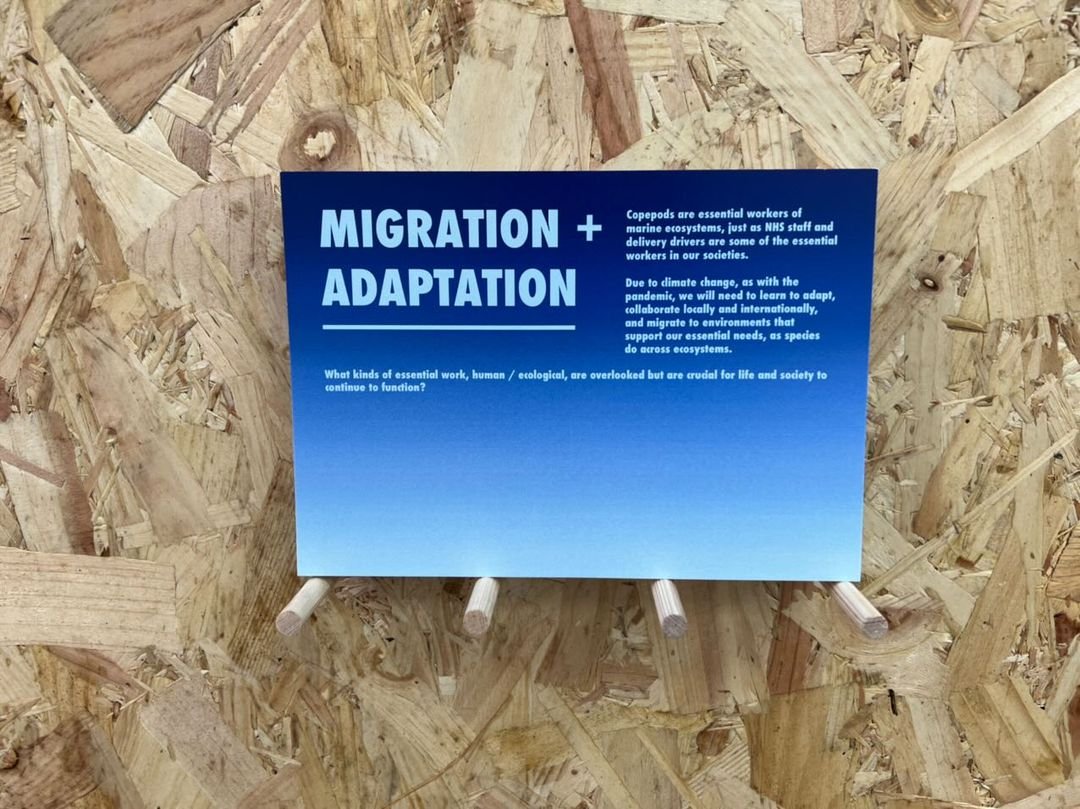
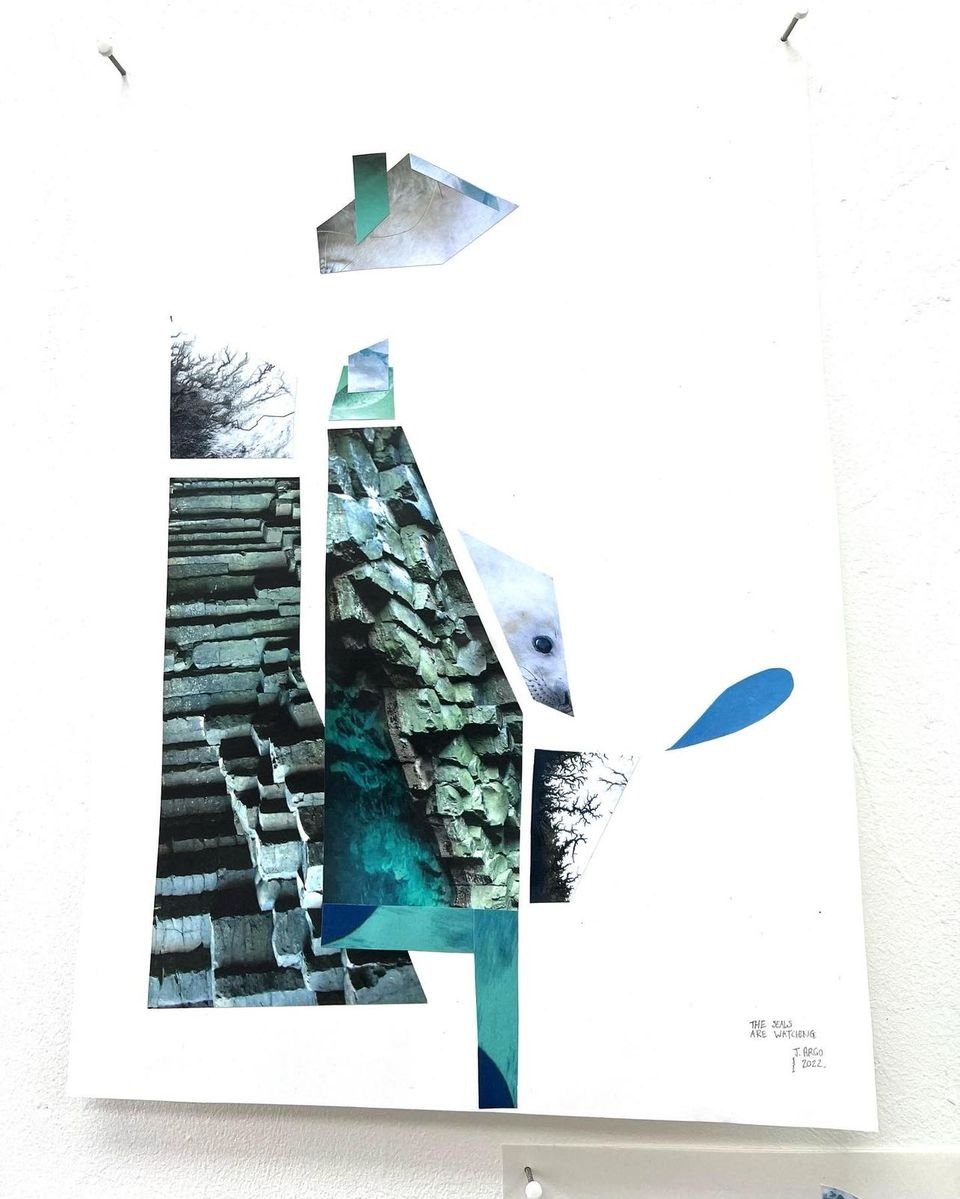
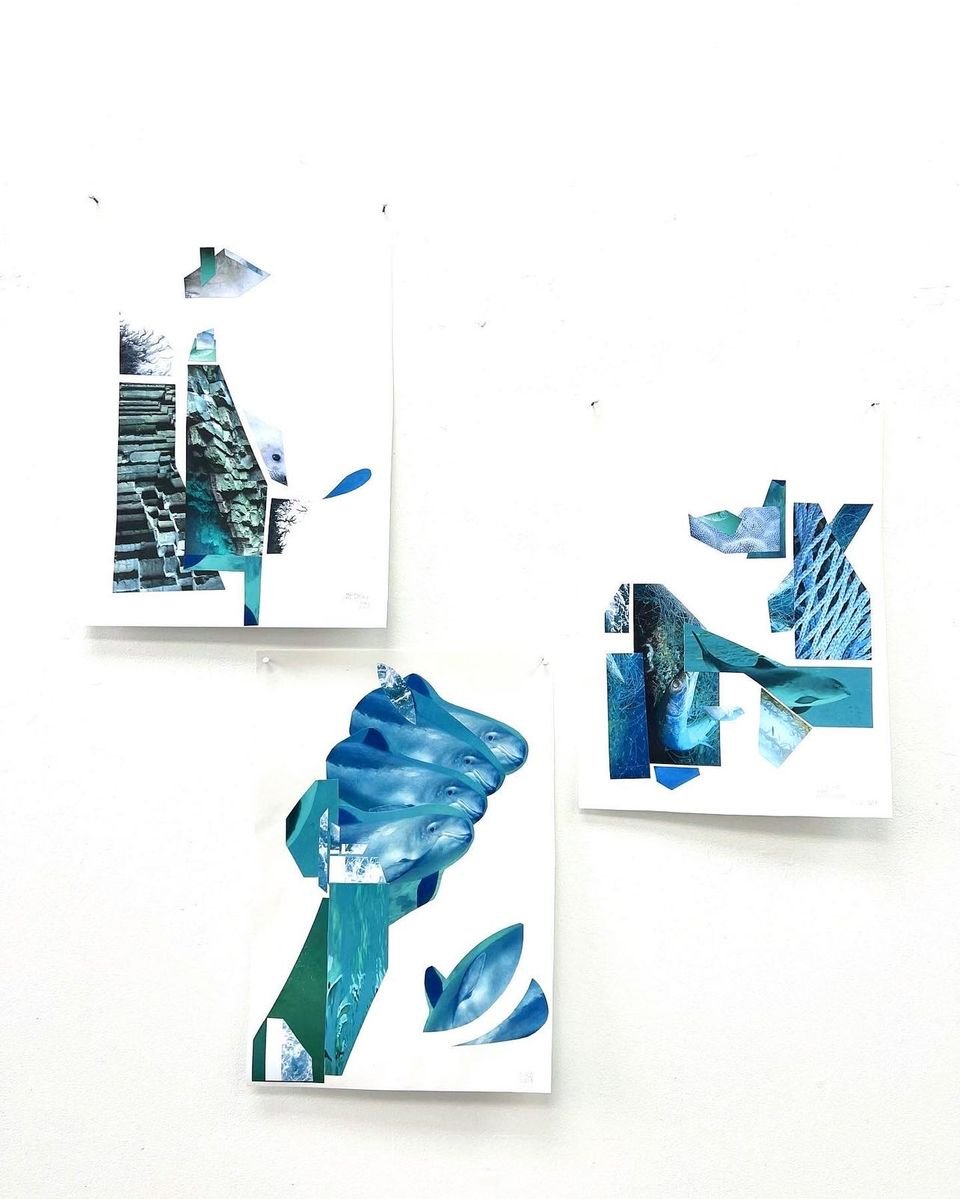
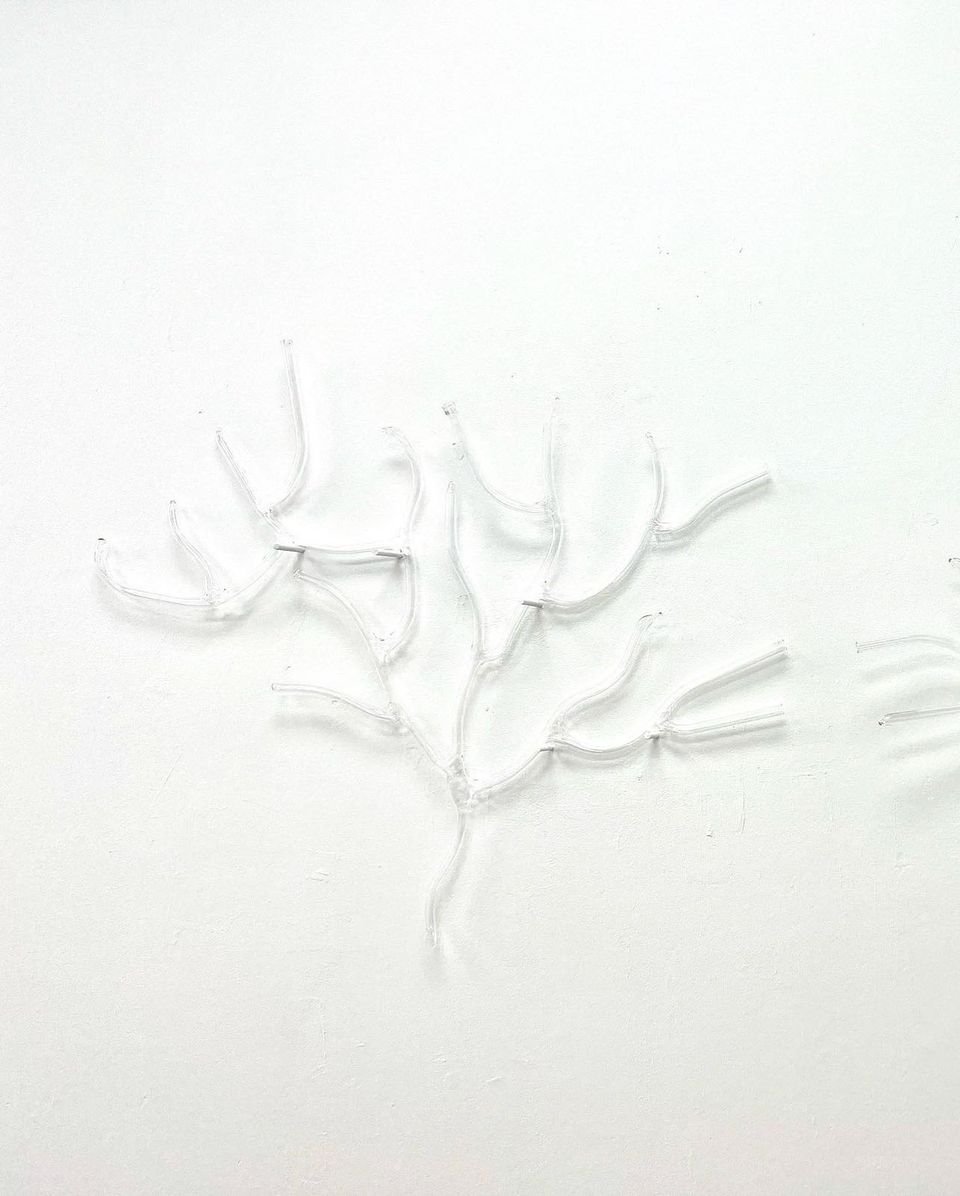


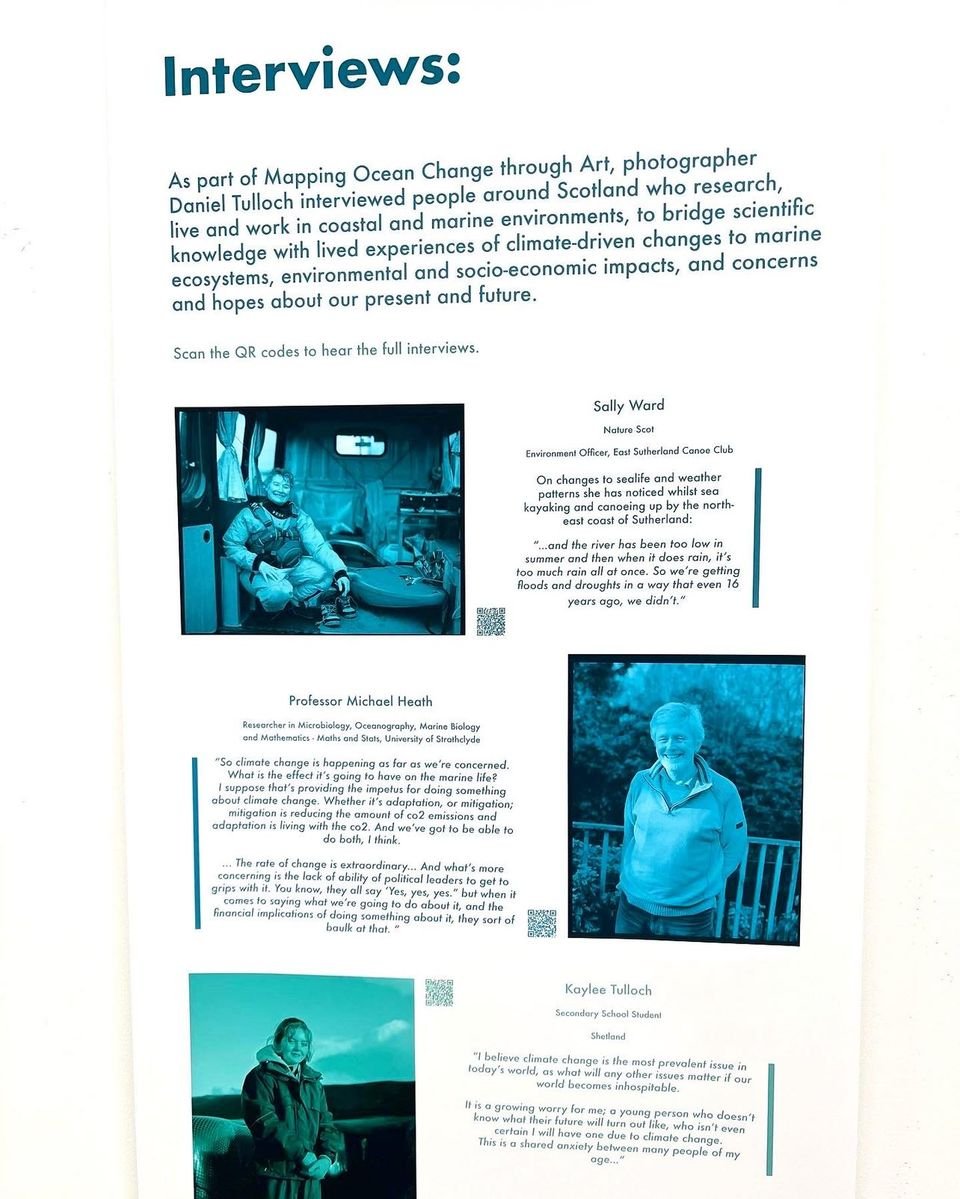
1: Migration + Adaption
Interactive note board:
Copepods, a type of plankton and a vital foundation of marine food-chains, are essential workers of marine ecosystems, just as NHS staff and delivery drivers are some of the essential workers of our societies.
Due to climate change, as with the recent pandemic, we will need to adapt, learn to collaborate locally and internationally, and migrate to environments that support our essential needs, as species do across ecosystems.
What kinds of essential work, human / ecological, are overlooked but are crucial for life and society to continue to function?
2: Ecosystem Dynamics Series
Climate-driven changes can create knock-on effects throughout ecosystem networks; changes can be seen both locally and internationally over small-scale and large-scale distances, through food-chain dynamics and migration routes or complete range shifts.
Collage on paper, Jennifer Argo.
3: Fragile Networks
Glass sculptures in the form of coral structures:
The coral structures represent ecosystem networks, change occurs not in isolation but throughout ecosystems to different species and habitats. The fragile nature of the glass emphasises that these ecosystems are delicate.
Climate-driven changes can have knock-on effects throughout ecosystem networks. Ecosystems can adapt and recover to overcome adverse effects, but they need time to do so. When change happens rapidly, the chance for recovery and adaption becomes critical.
Some species adapt well to change, and scientists have been excited to learn that many Arctic species thrive during the Arctic Night, periods of 24 hours of darkness over the winter months, previously presumed to be a period of relative inactivity, when some adapt to the darkness by foraging for whatever resources they can find, rather than going for a specific food source. Other species migrate to find resources elsewhere, others form mutually-beneficial ways of gathering and sharing resources, some overwinter to develop and emerge when there is more access to resources again.
Species will have to adapt across different environments due to climate change, changing their resources or migrating to more liveable habitats. This is already affecting many people as well as plant, animal and insect populations around the globe as a result of the climate crisis.
Scientists are still learning about individual species and collective ecosystem dynamics. We know what some of the larger implications of climate change are: warming, drought, natural disasters, but we cannot fully predict the effects of climate change across ecosystems.
Designed by artist Jennifer Argo
Fabricated by scientific glass blower Ian Pearson in Thurso, at Glass Creations in Thurso and North Lands Creative in Caithness.
4: Changing Habitats: Video
As Arctic sea ice melts, the surface of the water may be covered by more algae blooms.
Algae blooms can be made up of different kinds of algae. The ones featured are made up of phytoplankton cyanobacteria that live in water. A phytoplankton bloom is the development of a level of phytoplankton biomass that is uncharacteristically high for a given water body.
Phytoplankton photosynthesise, using carbon dioxide and sunlight to produce carbohydrates and oxygen, which are vital ingredients for life processes.
As sea ice melts, and more sunlight reaches the surface of the water directly, this creates the opportunity for more algae blooms to thrive.
Algae blooms occur naturally, but human production and use of fertiliser floods land-based ecosystems and farmland with an excess of nutrients, which make their way to the ocean via ground water and river networks. This creates excess algae blooms in river estuaries and oceans. Some of the algae sinks to the seafloor, where bacteria that feed on algae phytoplankton blooms break down the algae and deplete the water of oxygen, creating dead zones in rivers and the oceans. Some algae also produce toxins which can be dangerous for species which feed on them, and for other larger mammals that feed on those species.
Ice sheets currently create dark areas under the surface of the water, and algae blooms will also create similar light levels under the water.
Species adapt to changing environments with time; we are yet to see how species adapt to changing environments in the Arctic, and how this will affect the migration routes and food chains of marine species.
Footage:
Video Loop 1 - Left:
Under the Arctic Ice, Wahlenbergfjorden, Svalbard
Footage by Daniel Ludwig Vogedes PhD and his team,"Deep Impact" & "KROP" research technician, ”Mare Incognitum" webpage administrator: https://www.mare-incognitum.no/, Department of Arctic and Marine Biology, UiT The Arctic University of Norway
Video Loop 2 - Right:
More info on algae blooms:
https://www.jyi.org/2019-march/2019/3/1/a-chilly-change-in-perspective-on-arctic-algae-blooms
https://scitechdaily.com/swirling-green-algae-blooms-in-baltic-sea-viewed-from-space-video/
5: Interviews
As part of Mapping Ocean Change through Art, photographer Daniel Tulloch interviewed and photographed people around Scotland who research, live and work in coastal and marine environments, to bridge scientific knowledge with lived experiences of climate-driven changes to marine ecosystems, environmental and socio-economic impacts, and concerns and hopes about our present and future.
Interviews and portraits: Daniel Tulloch
Transcriptions and website: Jennifer Argo
Acknowledgements:
I would like to thank everyone who contributed to the project: the Natural Environment Research Council (NERC) for supporting the project; Creative Carbon Scotland, The University of Strathclyde, Sea Watch Foundation, Cove Park, Làn Thìde, Temple Harris, Clean Coast Outer Hebrides, The Scottish Association for Marine Science (SAMS), Lyth Arts, Dandelion, On Fife, and North Berwick Seabird Centre for collaborating; People Ocean Planet for impact evaluation; every researcher, natural heritage ranger, skipper, fisher, boat crew member and everyone who lives and works in coastal and marine environments who we interviewed; the rest of the Mapping Ocean Change through Art team: Dr Neil Banas, Professor Michael Heath, Dr Emma Tyldesley, Paul Udom, Aislinn Borland, Greg Macmillan, Dr Alison Cathcart, Dr Chris Leakey, Liz Mills, Daniel Tulloch; Ian Pearson for glass fabrication and transportation; a special thanks to Iman Tajik, Jessica Argo, Douglas Argo, and Basharat Khan for assistance.

